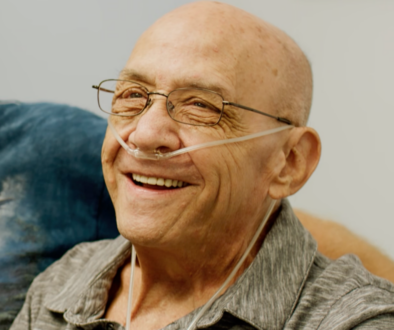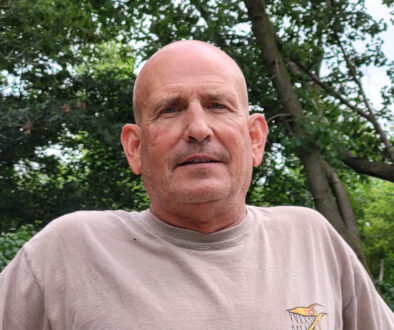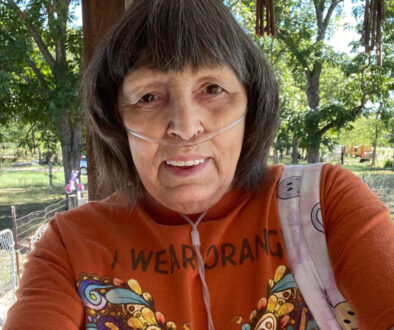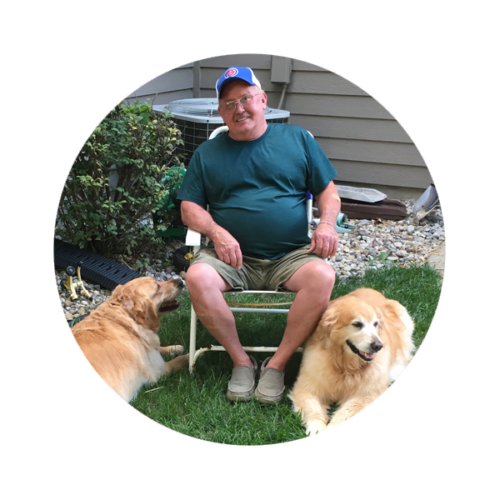
Greg’s Story
“It is important for me to share my story to let others know about this treatment option before it’s too late.”
Procedure Details:
Age at Treatment: 64
Date of Procedure: June 2020
Hospital: University of Louisville (Louisville, KY)
Hometown: Morrisville, IN
Greg’s Story
“It is important for me to share my story to let others know about this treatment option before it’s too late.”

Procedure Details:
Age at Treatment: 64
Date of Procedure: June 2020
Hospital: University of Louisville (Louisville, KY)
Hometown: Morrisville, IN
Life Before Zephyr® Valves:
Before COPD you couldn’t slow me down. I was in the Marine Corps, I played softball and basketball, did yardwork and building projects, and helped friends with their projects. Then in 2015 when I was in my late 50s, I had an episode where I lost my breath for about 30 seconds and my wife rushed me to the ER. We thought it was a heart attack, but they kept me overnight to run further tests including CT scans which showed the real problem was COPD/emphysema. Although I was a smoker, environmental factors contributed to my COPD too. I worked with heavy machinery and melded a lot of metal over the years.
When the emphysema hit, it destroyed me. I went from a very full life to a very limited existence quickly. I had to be on oxygen at night and while doing any activities around the house. My social life basically stopped. Even with an inhaler and oxygen, I still ran out of air when trying to hold a full conversation. I couldn’t walk 10 feet without being winded. I just kept wondering “what the heck is going to happen to me.” The disease affects your body and your mind. I would become very aggravated and frustrated about all the things I could no longer do. I don’t know how my wife Debbie put up with me.
We were originally told to think about a lung transplant, but we read the information on that and I just didn’t want to go through it. My sister also had emphysema and she found some information on the Zephyr Valves. We did our research and they were not doing Zephyr Valves in Indiana yet, so we went to Louisville, Kentucky. The nurse coordinator at University of Louisville, Crissie, explained everything in detail and I was all in — I had to try something.
– Greg
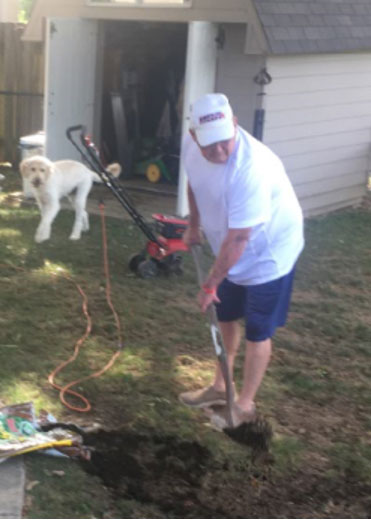
Life After Zephyr Valves:
The procedure went very smooth. I went to sleep and next thing I know I’m waking up in my room. I stayed the required three days, had no complications, and was back home in Indiana the same week. From Saturday through Monday I didn’t feel like I had much life in me. Then on Tuesday morning, everything changed! I said to my wife “I am breathing!” and it has just gotten better and better every day. You can tell by looking at me that the hyperinflation in my lung is down.
I still use my inhalers, but I don’t need oxygen during the day and my oxygen stays around 95 without it. At night I use my CPAP machine. I’m back to getting things done around the house again and it feels great! Right now, I’m painting a big wooden deck that wraps around our house. We are also looking forward to my son getting married soon.
We would like you to thank Marcee at Pulmonx and, of course, Dr. Gauhar and Crissie at University of Louisville — they made my life and Debbie’s life a whole lot better.
As my wife says, “Before the valves I worried. I still worked and hated to leave him home alone. Now I know he will be alright. I really am less worried, and life is just so much better for us both.”
Unfortunately, my sister, who first told me about the valves, passed away from the disease so it is important for me to share my story to let others know about this treatment option before it’s too late.
Results from case studies are not necessarily predictive of results in other cases. Results in other cases may vary.
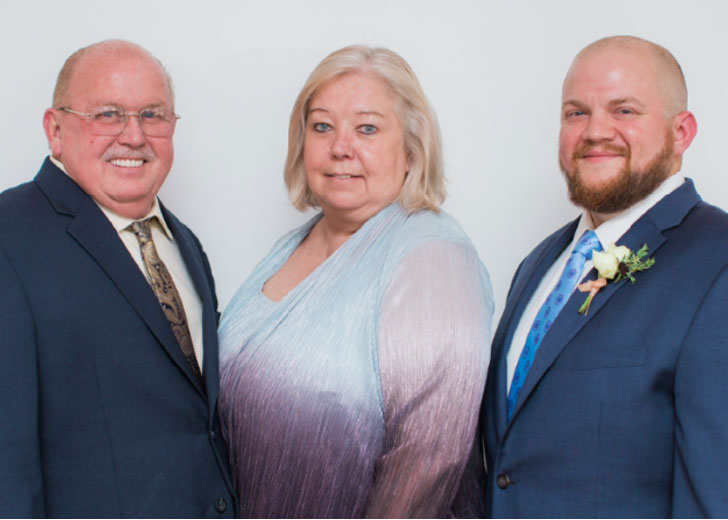
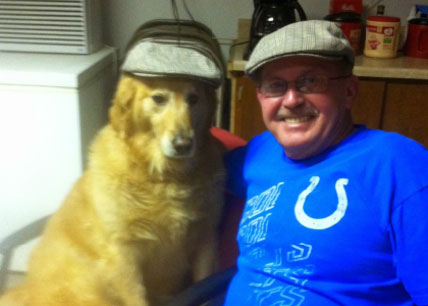
GLO-EN-746-v1
What is the Zephyr Valve procedure?
The Zephyr Valve has been shown to help patients breathe easier, do more, and enjoy life.1
Despite taking the best available medications, many patients with severe COPD/emphysema suffer from hyperinflation of their lungs where air becomes trapped in the lungs, preventing fresh air from entering and thereby causing severe shortness of breath.
The Zephyr Valves reduce lung hyperinflation by allowing trapped air to escape and preventing new air from entering that diseased lobe. This allows the healthier parts of the lung to function better and results in patients being able to breathe more easily and experience less shortness of breath.
The valves are placed via bronchoscopy, with no incision or cutting, so these benefits are achieved without the risks of traditional surgical options. The procedure is usually complete in under an hour.
Complications of the Zephyr Endobronchial Valve treatment can include but are not limited to pneumothorax, worsening of COPD symptoms, hemoptysis, pneumonia, dyspnea and, in rare cases, death.
-
Before COPD you couldn’t slow me down. I was in the Marine Corps, I played softball and basketball, did yardwork and building projects, and helped friends with their projects. Then in 2015 when I was in my late 50s, I had an episode where I lost my breath for about 30 seconds and my wife rushed me to the ER. We thought it was a heart attack, but they kept me overnight to run further tests including CT scans which showed the real problem was COPD/emphysema. Although I was a smoker, environmental factors contributed to my COPD too. I worked with heavy machinery and melded a lot of metal over the years.
When the emphysema hit, it destroyed me. I went from a very full life to a very limited existence quickly. I had to be on oxygen at night and while doing any activities around the house. My social life basically stopped. Even with an inhaler and oxygen, I still ran out of air when trying to hold a full conversation. I couldn’t walk 10 feet without being winded. I just kept wondering “what the heck is going to happen to me.” The disease affects your body and your mind. I would become very aggravated and frustrated about all the things I could no longer do. I don’t know how my wife Debbie put up with me.
We were originally told to think about a lung transplant, but we read the information on that and I just didn’t want to go through it. My sister also had emphysema and she found some information on the Zephyr Valves. We did our research and they were not doing Zephyr Valves in Indiana yet, so we went to Louisville, Kentucky. The nurse coordinator at University of Louisville, Crissie, explained everything in detail and I was all in — I had to try something.
-
The procedure went very smooth. I went to sleep and next thing I know I’m waking up in my room. I stayed the required three days, had no complications, and was back home in Indiana the same week. From Saturday through Monday I didn’t feel like I had much life in me. Then on Tuesday morning, everything changed! I said to my wife “I am breathing!” and it has just gotten better and better every day. You can tell by looking at me that the hyperinflation in my lung is down.
I still use my inhalers, but I don’t need oxygen during the day and my oxygen stays around 95 without it. At night I use my CPAP machine. I’m back to getting things done around the house again and it feels great! Right now, I’m painting a big wooden deck that wraps around our house. We are also looking forward to my son getting married soon.
We would like you to thank Marcee at Pulmonx and, of course, Dr. Gauhar and Crissie at University of Louisville — they made my life and Debbie’s life a whole lot better.
As my wife says, “Before the valves I worried. I still worked and hated to leave him home alone. Now I know he will be alright. I really am less worried, and life is just so much better for us both.”
-
The Zephyr Valve has been shown to help patients breathe easier, do more, and enjoy life.1
Despite taking the best available medications, many patients with emphysema, a common form of COPD, suffer from hyperinflation of their lungs where air becomes trapped in the lungs, preventing fresh air from entering and thereby causing severe shortness of breath.
The Zephyr Valves reduce lung hyperinflation by allowing trapped air to escape and preventing new air from entering that diseased lobe. This allows the healthier parts of the lung to function better and results in patients being able to breathe more easily and experience less shortness of breath.
The valves are placed via bronchoscopy, with no incision or cutting, so these benefits are achieved without the risks of traditional surgical options. The procedure is usually complete in under an hour.
Results from case studies are not necessarily predictive of results in other cases. Results in other cases may vary.
– Greg


